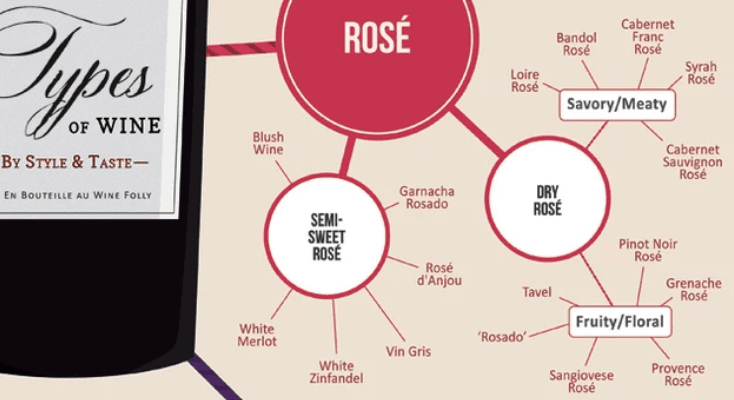For decades it seemed as though rosé wine earned less respect than its red and white cousins.
In recent years, however, the global love for rosé has developed to such a degree that it is now more popular in France than white wine.
Despite its current popularity and frequent association with millennials, rosé is hardly a new trend. In fact, it’s believed that some of the earliest wines ever made were actually pink, with the first documented rosé dating back to 7000 BC.
How’s that for a vintage?
How does rosé get its color?
The color of a rosé is given by the maceration method: meaning the time when red wine grapes stays in contact with the juice for a period of time, anything from two to twenty hours.
The freshly crushed grape juice is then pressed, and the skins are discarded rather than left in contact throughout fermentation. The longer that the skins are left in contact with the juice, the more intense the colour of the final wine.
Rosé has a light, fruity taste that is low in tannins, which make it a brilliant starting point for new wine drinkers.
Why can’t you age rosé?
It is a common fact that rosé is not meant to be stored and aged but is best consumed within 2-3 years of its release - this is all to do with the making process.
When a wine sits for a long time with its skins, such as red wine, the skins impart colour and tannins. These tannins protect the wine and increase its aging potential. Often this wine then spends time in oak and more tannins from the wood are imbued in the wine, further protecting it as it ages.
Rosé spends little time with its skins and is often aged in stainless steel, giving the wine no time to gain the tannins necessary to protect it. This is why it doesn’t age well and - on the bright side - you can drink it without having to wait.
Is rosé only for summer?
Although you can enjoy a glass of rosé any time of the year, we usually associate this type of wine with the summer season. This is partly due to how we drink it - chilled - which is very enjoyable when the weather is warm, but also because rosé pairs very well with light summer food such as salads or light grills.
The pink stuff has classically been a summer wine because of its production timing and limited quantities. It’s typically released in the spring and often sold out by autumn or winter, which creates a more seasonal feel. Given increased production in recent years, it’s becoming easier to find year-round. Great news for all of us.
Can you serve rosé with red meats?
There are many different rosés, ranging from light peach coloured to rich and savoury almost red. The result is that rosé wines are very versatile and can complement many types of food if you chose well.
Light and dry rosés (Provence especially) will pair very well with watermelon whereas the darker rosés (such as Tavel) are a good choice for meaty dinners or red wines lovers. They are powerful and can stand up to meats and other strong flavours and textures.
So where to start?
Well as always, these things come down to a matter of taste. This handy diagram is a good place to start.
Pick out a semi-sweet or dry and then check out the Winebuyers rosé selection.
There’s loads of choose from, and with our food pairing filter, you can find the perfect pink for you.
Easy.
 winefolly.com
winefolly.com
 winefolly.com
winefolly.com


:fill(white):fill_transparent()/sylius_prod/blog/direct-from-vineyard-menu.png)
:fill(white):fill_transparent()/_static/mega-menu/spirits-direct-from.png)
:fill(white):fill_transparent()/_static/mega-menu/offers-best-wine-and-spirits-deals.png)
:fill_transparent()/sylius_prod/blog/how-much-you-know-rose.png)
No comments
Leave a comment